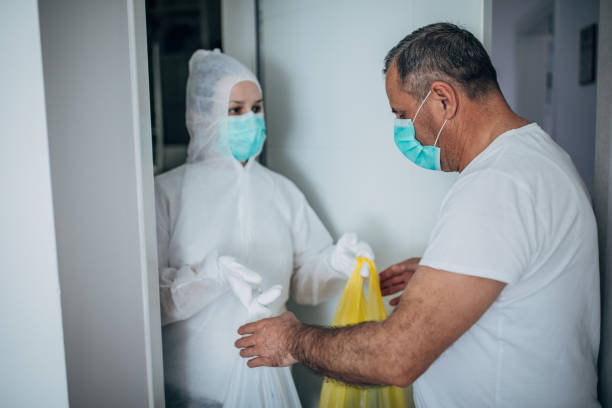Where to Donate Blood: A Comprehensive Guide
The Importance of Blood Donation
Blood donation is a critical component of healthcare systems worldwide. It saves millions of lives annually and improves the quality of life for many more. Blood donations are used in various medical situations, such as surgeries, cancer treatments, chronic illnesses, and traumatic injuries. Despite technological advancements, there is no artificial substitute for human blood, making voluntary donations indispensable. Understanding where to donate blood and the processes involved can help potential donors make informed decisions and contribute effectively to saving lives.
Types of Blood Donation
There are several types of blood donation, each serving a different purpose. Whole blood donation is the most common, involving the donation of approximately one pint of blood. This blood is later separated into red cells, plasma, and platelets. Platelet donation is another type, where a machine extracts platelets and returns the remaining blood components to the donor. This is crucial for cancer patients who often require platelet transfusions. Plasma donation involves extracting plasma, a vital component used to treat various conditions, including burns and shock. Double red cell donation allows donors to give two units of red cells in one visit, which is beneficial for patients with severe anemia or those undergoing surgery.
Finding Blood Donation Centers
Locating a nearby blood donation center is the first step in becoming a donor. Many organizations operate blood banks and mobile donation units, making it convenient for individuals to donate. The American Red Cross is one of the largest blood collection organizations in the United States, with numerous donation centers and regular blood drives. Their website offers a user-friendly tool to find donation locations based on zip code. Hospitals often have their own blood donation programs. Contacting local hospitals can provide information on how and where to donate blood within the community. Community blood centers are another excellent resource. These centers operate independently or in partnership with local healthcare providers and often hold regular blood drives in schools, workplaces, and public spaces. Websites like America's Blood Centers can help locate community blood centers.
The Donation Process
Understanding the donation process can alleviate any apprehensions potential donors might have. The process begins with registration, where the donor provides identification and some basic information. This is followed by a health history questionnaire and a brief physical examination to ensure the donor is eligible to give blood. The actual donation takes about ten minutes for whole blood and longer for platelet or plasma donations. After donation, donors are advised to rest and have some refreshments to help replenish their energy. The entire visit typically lasts about an hour.
Eligibility Requirements
Eligibility criteria for blood donation vary slightly between organizations but generally include being in good health, being at least 16 years old (with parental consent in some states), and weighing at least 110 pounds. Certain conditions and behaviors may temporarily or permanently disqualify someone from donating. These include recent travel to certain countries, certain medical conditions, medications, and lifestyle factors. It is always best to check with the specific donation center for their requirements.
Benefits of Donating Blood
Donating blood offers numerous benefits beyond the obvious life-saving potential. For donors, it can provide a sense of fulfillment and altruism. Some studies suggest that regular blood donation can have health benefits for the donor, such as reducing the risk of certain diseases and improving cardiovascular health. Additionally, it can serve as a mini-health checkup, as donors are screened for various health issues before being allowed to donate.
Blood Donation Myths
There are many myths and misconceptions surrounding blood donation that may deter potential donors. One common myth is that donating blood is painful. In reality, most donors report only a brief pinch when the needle is inserted. Another myth is that donating blood can make you weak. While it’s true that donors might feel a bit tired afterward, the body quickly replenishes the donated blood. Addressing these myths and providing accurate information can help encourage more people to donate.
Special Blood Donation Programs
Some programs are designed to encourage specific groups to donate blood. For example, programs targeting college students and young adults aim to build a habit of regular donation early. Corporate blood donation programs encourage businesses to organize blood drives, fostering a culture of giving within the workplace. Additionally, some programs focus on recruiting donors with rare blood types, which are often in high demand but low supply.
Blood Donation and COVID-19
The COVID-19 pandemic has affected blood donation drives globally. Many donation centers have implemented additional safety measures to protect donors and staff. These include enhanced cleaning protocols, social distancing, and health screenings. Some centers also collect convalescent plasma from recovered COVID-19 patients, which can be used to treat current patients. It's important for potential donors to know that donating blood is safe, even during a pandemic, and that their contributions are still desperately needed.
Encouraging Blood Donation
Encouraging more people to donate blood requires a multifaceted approach. Education is key. Informing the public about the importance of blood donation and the ongoing need for donors can help motivate individuals to donate. Personal stories and testimonials from recipients and donors can be powerful motivators. Additionally, making the donation process as convenient as possible through mobile blood drives and extended hours can help increase participation. Recognition programs, where donors receive certificates, pins, or other tokens of appreciation, can also encourage repeat donations.
The Future of Blood Donation
Advancements in medical technology and research continue to impact blood donation. For example, new methods of blood storage and transportation can extend the shelf life of donated blood, making it more widely available. Research into artificial blood substitutes continues, although these are not yet a viable replacement for human blood. Public health initiatives and collaborations between organizations can also play a significant role in ensuring a stable blood supply for the future.
Conclusion
Blood donation is a simple yet profound act that can save lives and improve health outcomes for countless individuals. By understanding where to donate blood, the types of donations needed, and the processes involved, potential donors can make informed decisions and contribute to this vital cause. Whether through local hospitals, community blood centers, or organizations like the American Red Cross, there are many opportunities to donate blood and make a difference. Encouraging more people to become regular donors through education, convenience, and recognition is essential to maintaining a stable blood supply and ensuring that this life-saving resource is always available when needed.




